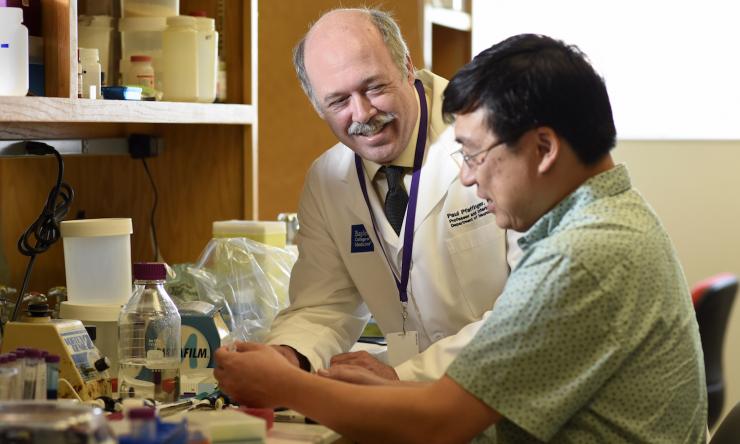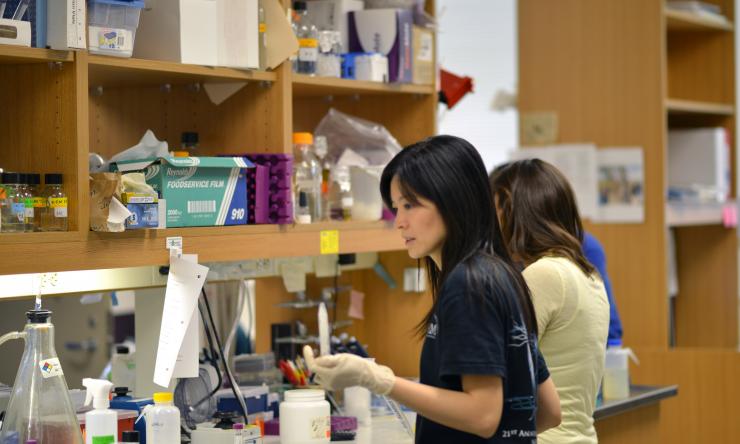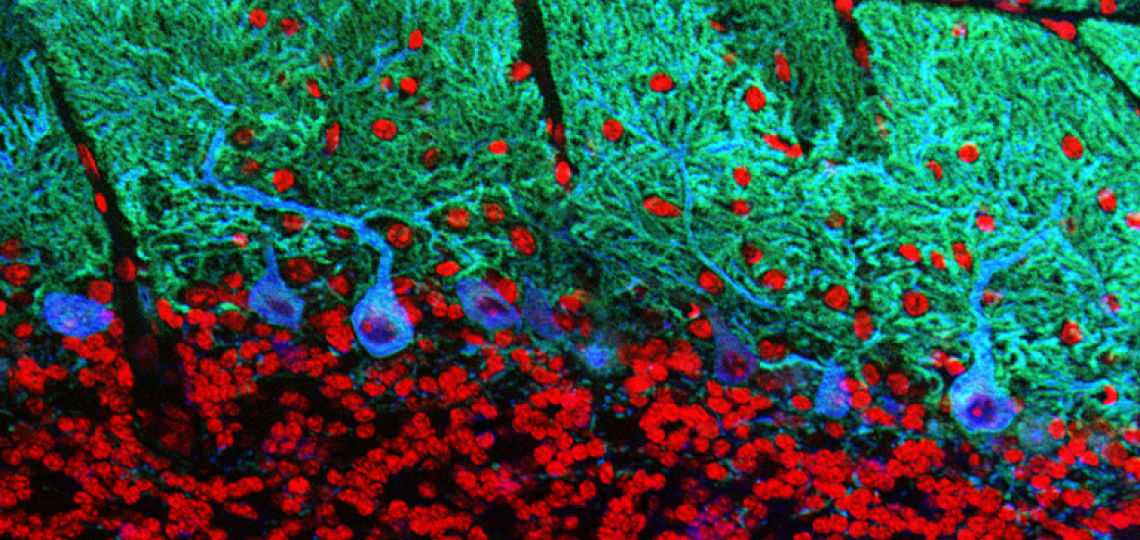
The Next Frontier in Biomedical Science: Understanding the Human Brain
Our program of advanced study of the nervous system prepares doctoral students for careers in independent research and teaching in neurobiology. We seek to provide intensive training in one particular approach to neurobiological research, while also providing a strong background in other areas of neurobiology. We promote collaborative research efforts among the different disciplines to maximize the interdisciplinary nature of the student's education.
Baylor College of Medicine is ranked second in the nation in funding for neuroscience research from the National Institutes of Health.
We have state-of-the-art research facilities for molecular neurobiology, neurochemistry, neuroanatomy, neurophysiology, biophysics, behavioral neuroscience, optical imaging, functional human brain imaging and computer science.
Faculty
Our interdisciplinary faculty includes basic scientists and clinicians applying multiple levels of analysis including biochemical, molecular, cellular, physiological, systems and theoretical approaches to investigate brain function.
Students
Your fellow students will be your first scientific colleagues. Our students have diverse backgrounds and interests.
Neuroscience News
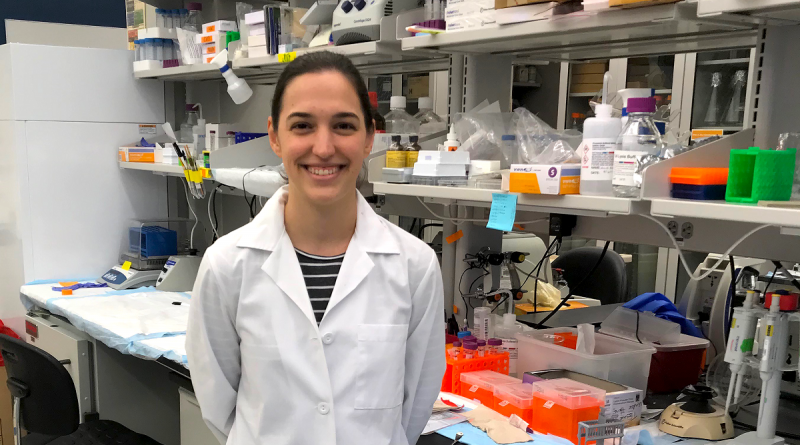
From my perspective: Amanda Brown shares her experiences as a graduate student at Baylor
From the Labs interviewed Amanda Brown to learn about what drives her fascination with science, her interest in science communication and her future plans in academia. See the interview and read this article on recent about Brown’s work on the role of Purkinje cells in tremors.
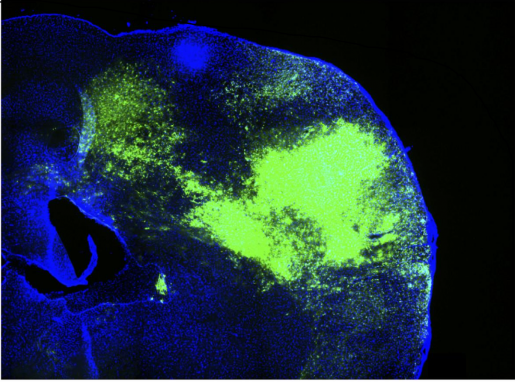
Brain tumors trigger silencing of neuronal activity
Sudden episodes of confusion and seizures often are the first signs of a malignant brain tumor. Using glioma mouse models, researchers detected waves of ultra-slow depolarization arising from the tumor margin. In the current study, researchers detected the depolarizing waves earlier than previously found, during a reproducible progression of inhibitory cell loss, glutamate dysregulation and inflammation in the tumor margin, and found that this excitability progressed more slowly when the tumor grew in a host brain that is genetically resistant to seizures.
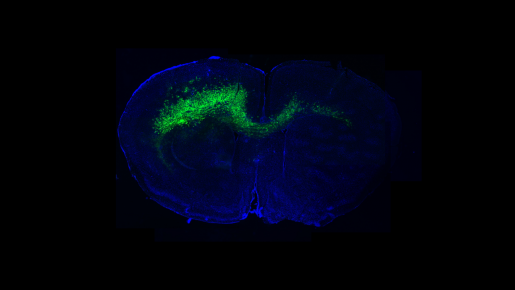
Like a mastermind of its own destiny, glioma sets a stage that favors its own growth
BCM researchers and colleagues uncovered evidence about how glioma manipulates its environment in ways that favor its own growth. This research, published in Nature, suggests new strategies to treat patients with this condition, one of the most aggressive malignant primary brain tumors.

Connecting Zika virus, hereditary microcephaly
Understanding how Zika virus causes microcephaly would hint at possibilities for preventing this irreparable condition in newborns. Heading in that direction, a collaboration between Baylor College of Medicine and the University of California, San Francisco has revealed interesting insights into the interactions between Zika virus proteins and host proteins, including human proteins.

Despite rapid advances in the field of neuroscience, only a limited number of cell types in the brain are known and well characterized. In this study, researchers described an innovative approach that identified novel cellular targets and genetic pathways involved in the wiring of adult-born neurons into brain circuits. Baylor graduate student Burak Tepe was one of the primary authors of this paper.
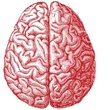
Making moves, memories, are they connected?
Baylor researchers have found the first direct evidence that the cerebellum does more than just control muscle activity. It also plays a role in cognitive functions.

Sample size matters in multisensory integration studies
The accuracy and reproducibility of research studies are a major concern of the scientific community. Baylor researchers are examining this problem in the field of multisensory integration to understand how it affects both basic research and the development of therapies.

He said/she said about body weight control
When male and female mice eat the same high-fat diet, the males gain significantly more weight than the females. The reasons for this difference between sexes are not completely understood, but Baylor's Dr. Yong Xu and his colleagues propose that part of the answer may be in the brain.

From the Labs
Subscribe to our blog to stay up-to-date on all the latest research news from Baylor College of Medicine.
Graduate School of Biomedical Sciences
The Neuroscience graduate program is part of the Baylor College of Medicine Graduate School of Biomedical Sciences. Visit the GSBS website for more information about our curriculum and admissions process as well as to find resources and services designed to support your success throughout graduate school and your future career.
Stipends and Benefits
At BCM we are focused on you and your training. If your vision for your future includes teaching, you may choose to gain experience as a teaching assistant. If you do not want to teach, you have the freedom to focus exclusively on your education and research as well as to work with your mentor to take advantage of other BCM resources that match your interests.








